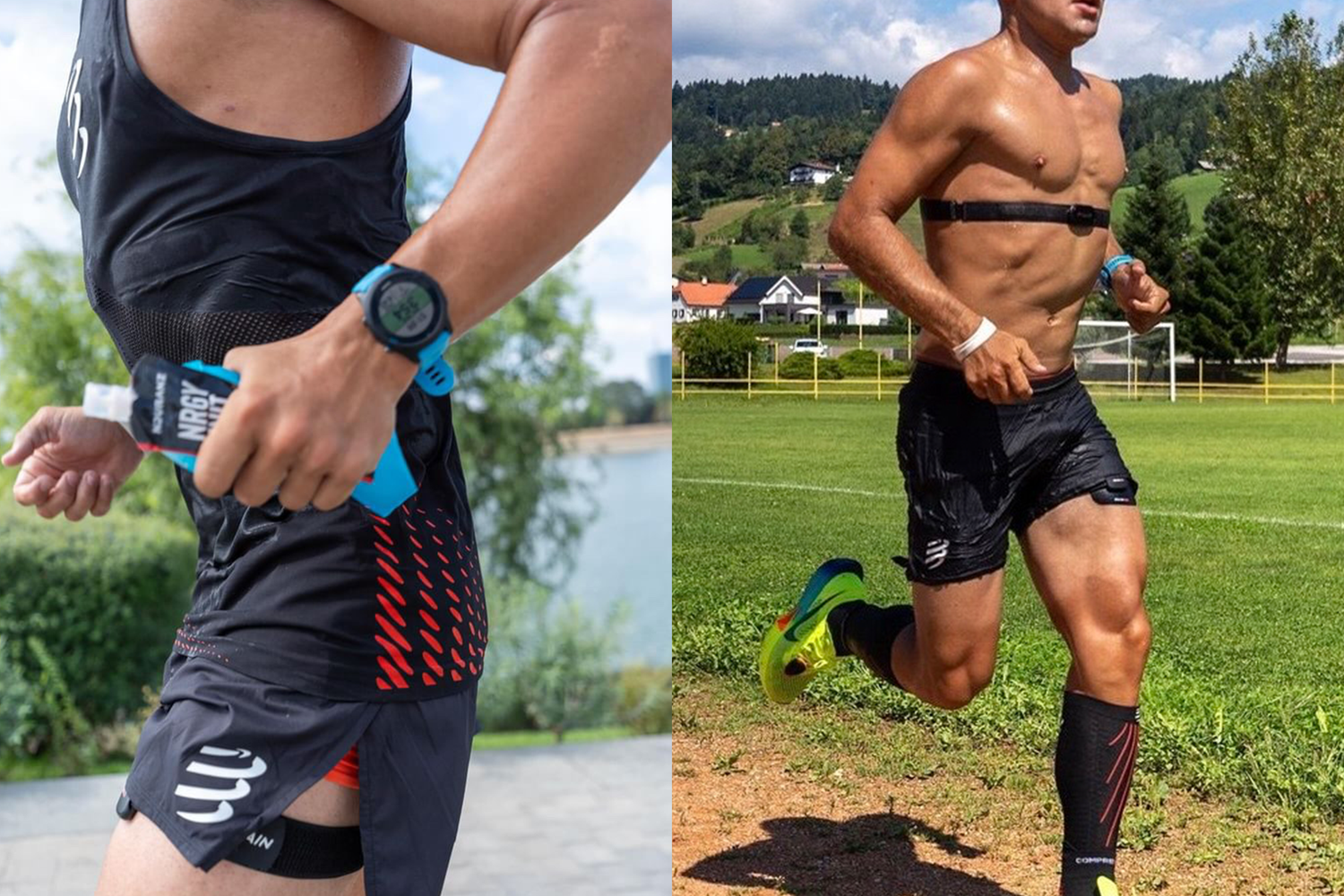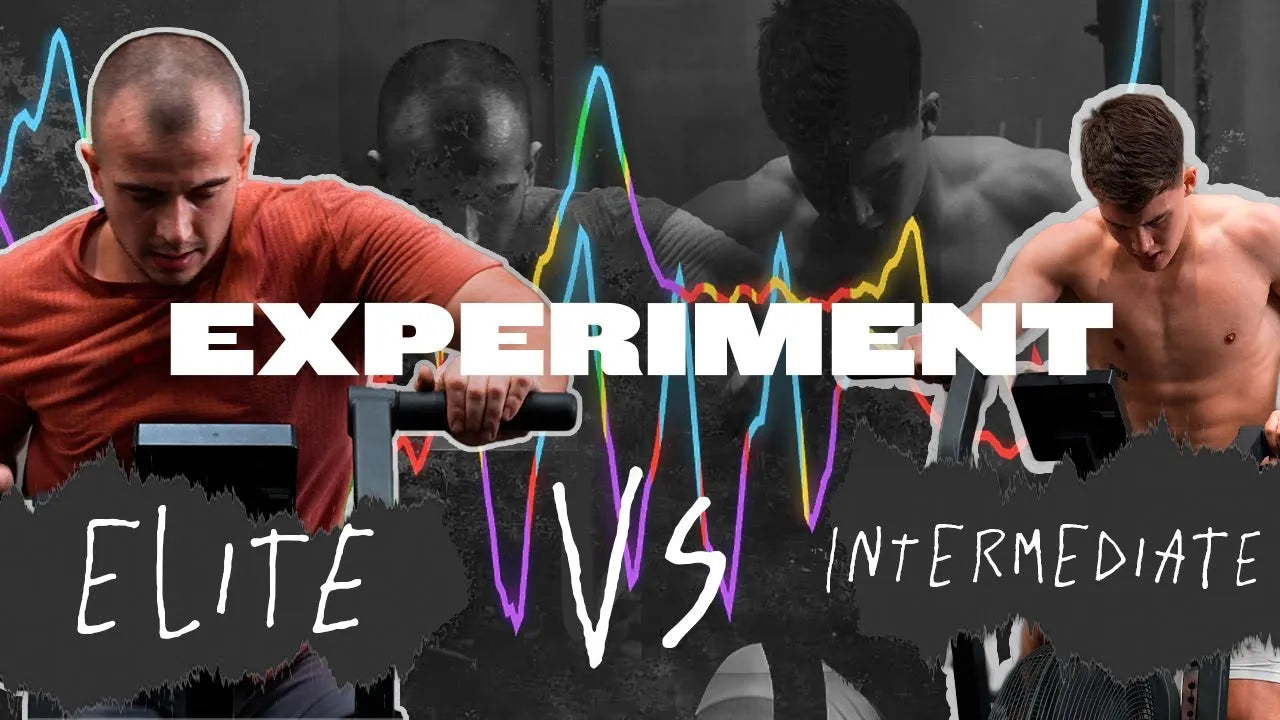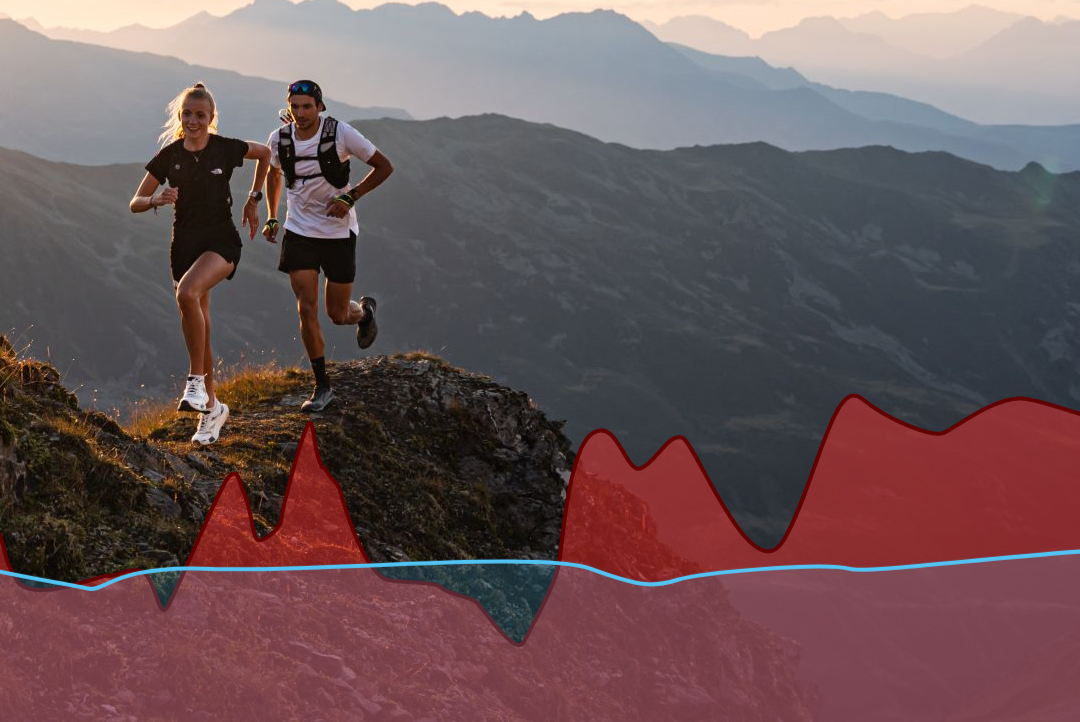INTRODUCTION
Is your heart beating faster because your muscle needs more oxygen, or does your muscle have more oxygen because your heart rate increases?
Heart rate is one of the best indicators of intensity. It is easy to measure, easy to use, and easy to translate into training zones. But how does heart rate compare and correlate with muscle oxygen?
Let’s dive into the similarities and differences.
In this first blog post, how do you measure Heart Rate and Muscle Oxygen?
MANUAL PULSE CHECK
Heart rate is easy, and straightforward to measure. Even without fancy equipment you can already feel, count, and calculate pretty accurately how fast your heart is beating.
You can literally feel your pulse at your wrist or neck.
For wrist-based pulse measurements, place two fingers between the bone and the tendon over your radial artery, the main artery on the lateral side of the forearm. This artery is located on the thumb side of your wrist.
For neck-based pulse measurements, place two fingers in the groove of your neck on the side of your windpipe.
A Medical Doctor does not feel your heart rate but often uses a Stethoscope to listen to your heartbeat.
When you feel (or hear) your pulse, count the number of beats in 15 seconds. Multiply this number by four to calculate your beats per minute. For example, if you counted 20 beats in 15 seconds, your heart rate is 80 bpm.
Muscle oxygen is not something you can feel or count, it is the percentage of available oxygen in the muscle tissue, similar to your arterial saturation for example.
SMARTPHONE SOLUTION
If you’re not confident in your abilities to identify, palpate, and count your pulse, there are solutions to detect this automatically. Several smartphone apps can measure your heart rate using the phone’s camera and flash. The app uses the camera to detect color changes in your fingertip. These color changes correspond to your pulse.
Today’s smartphones can use optical technologies, but not the optical technologies that we use at Train.Red. No smartphone app can measure the saturation in your muscle tissue using a smartphone camera.
HEART RATE MONITORS
Feeling and counting your heart rate becomes more complex when performing sports activities. To accurately feel and count, you have to stop what you’re doing. The same goes for the camera functionality, it is difficult to measure while you are doing the activity. Luckily there are two types of heart rate monitors that can help you with this problem by measuring continuously.
Chest Strap monitors are often considered the most accurate. The strap is worn around the chest and measures electrical signals from your heart. It transmits this data to a watch or smartphone.
Wrist-worn monitors are fit into many fitness trackers and smartwatches, like the Apple Watch, Fitbit, or Garmin devices. They use optical sensors to measure blood flow under the skin. You do not only find these optical sensors in wrist worn devices, there are alternatives for e.g. your upper-arm.
ECG/EKG
The gold standard for measuring heart rate is an Electrocardiogram. It records the electrical activity of the heart and can provide detailed information. This is often used in a medical, clinical setting. You attach electrodes to specific points on your body (usually the chest, arms, and legs) to record heart activity. The ECG provides a detailed graph of your heart's electrical activity, and the heart rate can be derived from this data.
OTHERS
Most modern blood pressure monitors and pulse oximeters measure heart rate in addition to their primary goal. Even the Train.Red sensors can measure the heart rate when placing the sensor over a superficial artery.
WHAT ABOUT THE MUSCLE?
Train.Red sensors are by far the most practical to measure muscle oxygenation. There are a few other methods to quantify oxygen levels in muscle tissue, however, these are invasive, non sports feasible, or require more advanced and expensive techniques.
MAGNETIC RESONANCE IMAGING (MRI)
There are two advanced imaging techniques used to measure oxygenation indirectly. Blood Oxygen Level Dependent (BOLD) MRI measures the change in magnetic properties of hemoglobin, these properties change dependent on oxygen. With Dynamic Contrast Enhanced (DCE) MRI the oxygen delivery to muscles can be estimated using a contrast agent quantifying blood flow.
INVASIVE METHODS
Other techniques that require a marker injection are Indocyanine Green (ICG) Dye and Positron Emission Tomography (PET) Scans. With ICG a dye is injected into the bloodstream, this dye binds to the proteins and reflects oxygen levels. PET scans can measure tissue metabolism and oxygen utilization by using radiolabeled tracers.
The only way to measure oxygen and other metabolites in the tissue directly is through Microdialysis. You insert a small probe in the muscle tissue, which samples extracellular fluid. Measuring oxygen pressure directly, can be done with a Clark Electrode. The electrode is placed in the muscle and measures the ambient oxygen using a catalytic platinum surface.
MUSCLE OXYGEN
Not only are the other methods to measure muscle oxygen invasive, expensive, not continuous, not in real-time or simply not possible during sports... none of the methods can measure the saturation of oxygen in the muscle tissue. This is one of the biggest challenges in the field of Muscle Oxygen. Research and Industry are collaborating closely to ensure the optical sensors used to quantify tissue oxygenation match the physiological truth.
We as Train.Red are excited to contribute and be part of this evolving knowledge base.
HEART RATE vs MUSCLE OXYGEN
Heart rate tells you how hard your cardiovascular system is working, while muscle oxygen saturation gives insight into how well your muscles are supplied with oxygen. An increase in heart rate reflects the body’s demand for oxygen as exercise intensity rises, while muscle oxygen saturation shows how efficiently oxygen is being delivered and utilized in your muscles.
- Heart Rate is often used to track aerobic intensity and cardiovascular load.
- Muscle Oxygen helps you understand how well your muscles are able to use oxygen during exertion and whether they are running into an oxygen deficit.
The two measurements complement each other. While heart rate rises with exercise, muscle oxygen saturation can fluctuate based on how well your muscles can maintain oxygen supply. High heart rates and low muscle oxygen levels may indicate that you are pushing into anaerobic zones, where your muscles are no longer receiving enough oxygen to sustain activity.
NEXT BLOG
Feel free to add to the discussion below with any questions or comments you may have. In our next blog we will focus and compare typical data from your heart, with your muscles.



